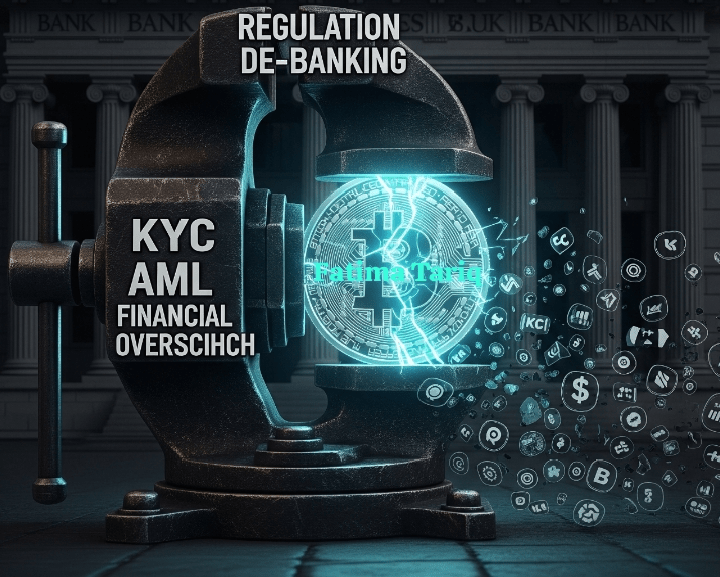
The U.S. cryptocurrency market, long burdened by a climate of regulatory hostility and banking restrictions, is experiencing a fundamental shift. Under the leadership of the Trump administration, a concerted effort is underway to dismantle what many in the industry have dubbed "Operation Choke Point 2.0"—a quiet, informal campaign by federal banking regulators to discourage financial institutions from doing business with cryptocurrency companies. This reversal is a cornerstone of the administration’s broader strategy to make the United States the global leader in digital assets and financial innovation.
Understanding Operation Choke Point 2.0

"Operation Choke Point 2.0" is an industry term referring to the alleged de-banking of cryptocurrency firms by U.S. financial institutions, a phenomenon that escalated following the collapse of the FTX exchange. The core of the accusation is that federal banking regulators—such as the Federal Reserve, the FDIC, and the OCC—used informal, opaque pressure to encourage banks to sever ties with the digital asset sector.
The Mechanism of Pressure: Instead of issuing formal rules, regulators reportedly relied on "guidance letters," staff statements, and confidential bank examinations. They often cited "reputational risk" as a reason for banks to reconsider their relationships with crypto companies. This approach allowed regulators to de-bank firms without an official public ban, making it difficult for the industry to challenge these actions.
The Impact on the Industry: The result was a chilling effect on the entire sector. Many legitimate crypto businesses, from stablecoin issuers to exchanges, found it nearly impossible to open or maintain bank accounts. This lack of access to traditional finance created a significant barrier to growth, hindered liquidity, and concentrated risk within the crypto ecosystem.
The Trump Administration’s Multifaceted Response

The Trump administration has launched a multi-pronged offensive to reverse this policy and foster a more favorable environment for digital assets. The strategy involves a combination of executive actions, new personnel appointments, and a public commitment to ending the regulatory "war on crypto."
Executive Order on Deregulation:
A key step was Executive Order 14192, titled "Unleashing Prosperity Through Deregulation," signed in early 2025. This order directed all federal agencies to review and, where appropriate, rescind or modify regulations that were deemed to be stifling innovation. At the SEC, Acting Chairman Mark T. Uyeda specifically cited this order as a directive to review and ultimately roll back previous guidance that had been criticized for its restrictive approach to digital assets.
Ending "Regulation by Enforcement":
A core tenet of the new policy is a rejection of the previous administration's "regulation by enforcement" strategy. Under the new leadership at the SEC, the agency has closed investigations into major crypto companies like Coinbase and OpenSea and dismissed charges against others. The newly formed "Crypto 2.0 Task Force," led by Commissioner Hester Peirce, is focused on creating clear rules and a practical path for crypto companies to register and operate legally. The Task Force’s mandate is to move away from a model where the legality of a digital asset is only determined after an enforcement action has been initiated.
New Leadership and Strategic Appointments:
Personnel changes are a critical component of the reversal. The appointment of Acting SEC Chairman Mark T. Uyeda and the prominent role given to Commissioner Hester Peirce—known as "Crypto Mom" for her long-standing advocacy for regulatory clarity—signals a new direction for the agency. The appointment of former PayPal executive David Sacks as the "Special Advisor for AI and Crypto" further solidifies this approach. Sacks is tasked with working on a legal framework that will allow the crypto industry to "thrive in the U.S.," and he chairs the President's Working Group on Digital Asset Markets, a body at the forefront of policy reform.
Codifying the Reversal through Legislation:
To ensure the reversal of "Choke Point 2.0" is permanent and cannot be undone by a future administration, the Trump administration has supported legislative efforts to codify its policies. The GENIUS Act (Guaranteeing Essential National Infrastructure in US-Stablecoins), reportedly signed into law in July 2025, is seen as the first major legislative pillar. It creates a clear regulatory framework for stablecoins, a sector that was a primary target of de-banking efforts. Furthermore, the Anti-CBDC Surveillance State Act, which passed the House of Representatives, aims to permanently prohibit the creation of a U.S. Central Bank Digital Currency (CBDC) that could be used for surveillance and financial control, thereby reinforcing the administration's commitment to financial privacy and free-market principles.
The combined impact of these actions is a dramatic shift in the U.S. digital asset landscape. The de-banking of cryptocurrency companies is no longer a tacit policy but a publicly opposed practice. The administration’s approach is not just a reactive measure but a proactive strategy to leverage digital assets to strengthen the U.S. dollar, promote American innovation, and secure the nation's position as a leader in the global financial system.
Don't copy it ✍🏻❌

